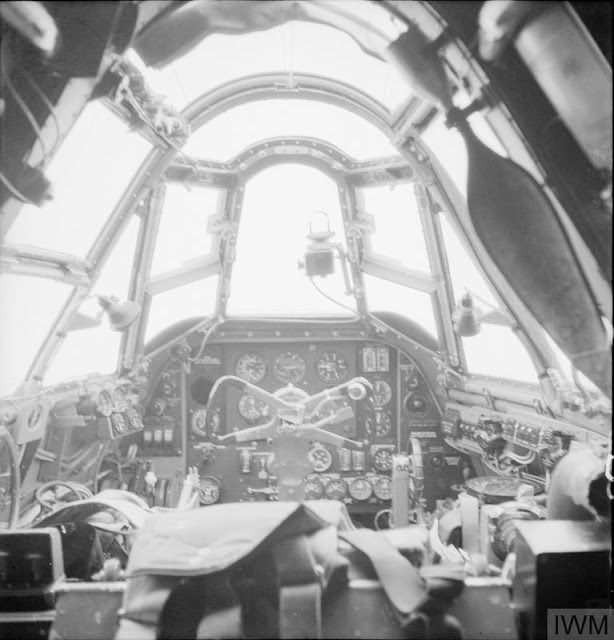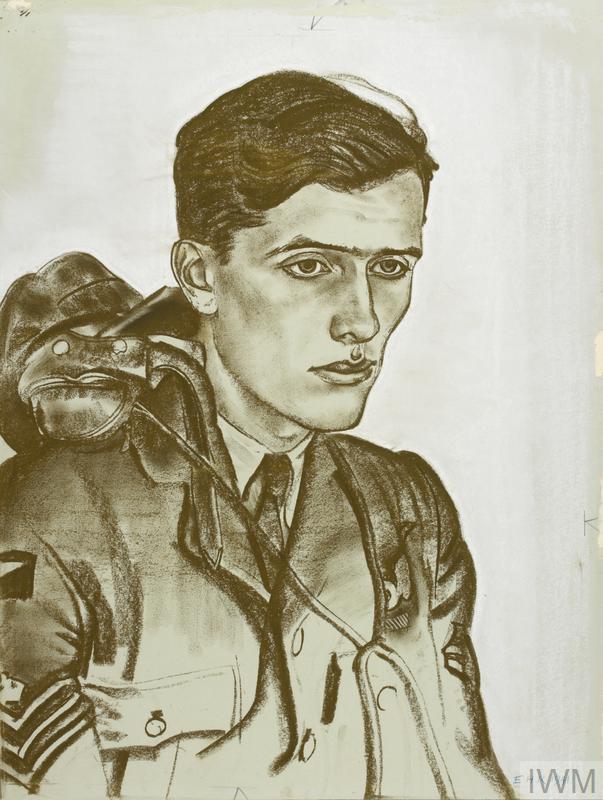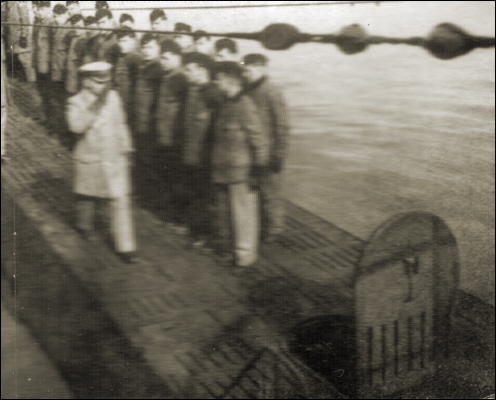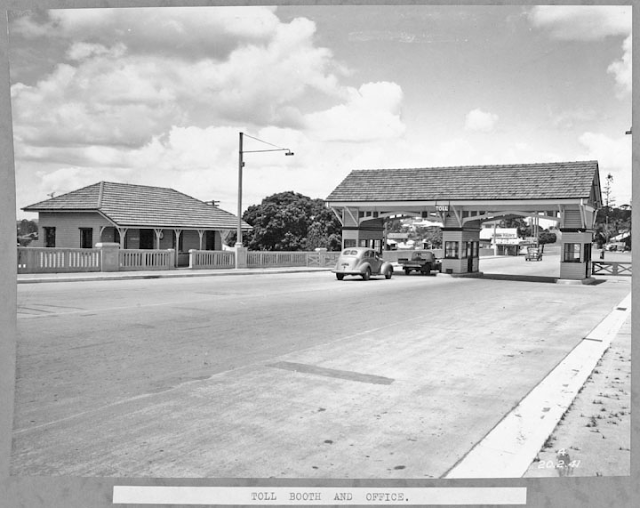Thursday 20 February 1941
 |
| The cockpit of a Beaufighter Mk IF of RAF No. 252 Squadron, based at RAF Chivenor, Devon. © IWM (CH 17305). |
All Italian counter-attacks have been repulsed. Today concentric Greek attacks are to take place southwards and westwards with a view to clearing up Southern portion of Shennell ridge north-east of Tepelene. If these succeed Tepelene should fall and second-phase operation will include operations towards Berat and also between Tepelene and the sea.The report does note that the 5th Cretan Division has incurred "about 3000 casualties... many with frostbite." In fact, the division has suffered horribly, over 5000 casualties, both from the weather and fierce Italian resistance near Tepelene. When one reads reports such as this, a natural conclusion is that the military observers know that Prime Minister Churchill is bent on sending troops to Greece, so they are painting a rosy picture to support or buttress that decision that may not exactly comport with the actual fighting. Without getting too far ahead of ourselves, we'll see the same tendency within the Wehrmacht in 1945. It is the same as regurgitating to a teacher answers that you know may not quite be accurate - but you want to secure that "A" by hook or by crook.
The Germans make an offer to mediate in the Greco-Italian war. Greece immediately rejects it.
East African Campaign: The South African assault across the Juba River near Jumbo continues today. At 06:30, the Natal Carbineers head across the pontoon bridge under fire. Some troops head north to cut the road north of Jumbo that the Italians could use to escape, while the Transvaal Scottish heads directly toward the town.
The Italians, as so often during the campaign, are abandoning their positions. By 10:30, the remaining troops in Jumbo - not many - surrender. Lieutenant-Colonel G.T. Senescall accepts the capitulation, and the British take 30 officers, 100 other Italian troops and an unknown number of native troops. The South Africans then quickly head for Yonte, making 14 miles in armored cars before coming under fire. They plan an attack on the Italians in the morning.
A separate advance across the Juba River also takes place. The 11th African Division and 22nd East African Brigade, supported by armored cars and South African light tanks, force a crossing at 04:00 near Bardera. This puts them within striking distance of Mogadishu.
The Italians in Massawa, Eritrea see the writing on the wall regarding the advancing British, just as other ships did at Kismayu earlier in the month. Four ships attempt to break out into the Indian Ocean. Italian armed merchant cruisers Ramb I and Ramb II set a course for the Pacific and elude all British patrols, while Italian sloop Eritrea and German supply ship Coburg also make good their escape.
 |
| An official drawing of Flight Sergeant R.W. Gellard by military artist Eric Henri Kennington. Gellard is awarded the Distinguished Flying Medal (DFM) on 20 February 1941 (© IWM (Art.IWM ART LD 1319)) |
RAF Bomber Command attacks the docks at Ymuiden, Holland during the day and does a Rhubarb Mission over France after dark.
The Bristol Beaufighter holds high promise, and the Air Ministry has dispersed its production to several different companies. The first Beaufighter Mk I built by Fairey flew on 7 February 1941, and today the first Weston-built Beaufighter Mk IF (F meaning it is destined for Fighter Command) flies at Weston-super-Mare, Somerset. These Beaufighters all use the Hercules engine, but shortages of this engine are anticipated, so Merlin engines will be adopted in future versions.
JG 51 Kommodore Mölders, after a long interval, gets two more victories, giving him 58 total to lead the war. This keeps him ahead of Adolf Galland.
Hans-Joachim Marseille of JG 27 returns to his unit at Berck-sur-Mer from leave. The unit soon will be heading to the East to support Operation Marita.
Luftwaffe ace Heinz Pohland of Stab LG 2 perishes in a flying accident.
 |
| Günther Prien departs from Lorient on his tenth (and last) patrol in U-47, 20 February 1941. Many people see in this picture a much older-looking man than the almost boyish figure who sank HMS Royal Oak in 1939. The strains of war and all that. These are among the last pictures of what some consider the greatest U-boat commander of all time (U47.org). |
The Luftwaffe bombs and sinks 1278-ton British freighter Rigmor south of Falmouth. Everyone survives.
The Luftwaffe bombs and damages minesweeper HMS Bramble off Harwich. The damage is light and the ship is back in service by the end of the month.
The Luftwaffe bombs and damages 162-ton British trawler Scarborough In the Atlantic west of Limerick. The bomb knocks out its engines, but it is towed into port.
The Luftwaffe bombs and damages 7138-ton British tanker British Splendor just off Lizard. The British Splendor makes it back to port.
The Luftwaffe bombs and damages 4312-ton British freighter St. Rosario in the Atlantic northwest of Ireland. The ship turns back to port.
The Luftwaffe bombs and damages 1997-ton British freighter Rosenborg in the same area as the St. Rosario. The St. Rosario also turns back and barely makes it to the Clyde.
The Luftwaffe bombs and damages 12,223-ton British tanker D.L. Harper in the Atlantic northwest of Ireland. The empty tanker continues on to Halifax.
British 5261-ton iron ore freighter Fort Médine hits a mine and sinks in the Bristol Channel near Swansea (off Mumbles Head). There are one death and 46 survivors.
Royal Navy 244-ton minesweeping trawler Marjory M. Hastie hits a mine off the Tyne. The captain quickly beaches the ship at Whitburn. It later is refloated and repaired.
Three destroyers, escorted by four other destroyers, lay minefield GS in the English Channel.
Convoy OB 289 departs from Liverpool, Convoy HG 54 departs from Gibraltar,
U-558 (Oberleutnant zur See Günther Krech) is commissioned, U-128, U-565, and U-566 are launched.
 |
| Prien saluting his men as they prepare to depart, 20 February 1941. |
Royal Navy submarine HMS Regent (Lt. Commander Brown) attacks a convoy of transports bringing the Afrika Korps to Tripoli. It torpedoes 5609-ton transport Menes. Menes is disabled and taken in tow, making it to Tripoli later in the day. Italian escort destroyer Saetta attacks Regent and damages it, forcing it to return to Malta.
Operation MC 8, a typically convoluted supply operation to Malta, continues. Several ships depart from Malta for Alexandria. The Luftwaffe quickly attacks them but fails to make any significant hits.
Royal Navy 462-ton trawler HMS Ouse hits a mine and sinks at Tobruk. There are 12 deaths and nine survivors, including the commander, Sub Lt. W.V. Fitzmaurice.
Convoy AS 15 departs from Piraeus bound for Alexandria and Port Said, Convoy BS 16 departs from Suez.
The Free French under Colonel Leclerc continues to invest the El Tag fortress at Kufra. The French are pounding the well-garrisoned Italian base with a 75mm field gun and several mortars. So far, the Italian troops have held firm, but their commander is very unsure of himself and looking for a way out.
Chief of the Imperial General Staff (CIGS) Sir John Dill, who is in Cairo with Foreign Secretary Anthony Eden, pays a surprise (and surreptitious) visit to Malta with Eden. The two discuss the situation with Governor Dobbie, tour the island's defenses, then return to Cairo on a Sunderland flying boat.
 |
| CIGS Field Marshal Sir John Dill in Cairo, 18 February 1941 (© IWM (E 2384E)). |
Convoy BA 1 departs from Bombay, bound for Aden.
Anglo/US Relations: Prime Minister Winston Churchill telegrams President Roosevelt with information about Japanese Foreign Minister Yōsuke Matsuoka. Churchill has been a font of information recently about Japanese plans without disclosing the source of his knowledge: decrypts of coded Japanese transmissions:
I have better news about Japan. Apparently Matsuoka is visiting Berlin, Rome and Moscow in the near future. This may well be a diplomatic sop to cover absence of action against Great Britain. If Japanese attack which seemed imminent is now postponed, this is largely due to fears of United States. The more these fears can be played upon the better....Churchill is painting quite a melodramatic picture. There is no indication that the Japanese are planning an attack in early 1941 aside from idle speculation. He is achieving his purpose, though, of keeping Roosevelt focused on potential war danger to the United States and thereby putting England and the US "in the same boat" - if only in Churchill's (and Roosevelt's) mind. The lingering danger for the United States, of course, is quite real - but not quite yet.
At the War Cabinet meeting, Churchill reveals that he had received a personal telegram from Ambassador to the US Lord Halifax. The ambassador recommended that Great Britain simply hand over its remaining assets to the United States and trust that the Lend-Lease Bill would pass and the US would underwrite the British war effort. The only issue left - as noted by Chancellor of the Exchequer Kingsley Wood - is to provide an orderly liquidation of whatever money the country has left.
Australian Government: Prime Minister Robert Menzies finally arrives in England, completing the last part of the journey from Lisbon in one hop. This is the most hazardous part of the journey, as the Luftwaffe often strays out into the Atlantic from its French bases. Menzies notes that there is a lot of snow in the fields and "unaccustomed cold." Along the route to his accommodations, Menzies writes, "you see troops in ones or twos." As he goes to bed, he hears "the reasonably distant concussion of guns."
Holocaust: Deportation of 30,000 Jewish residents of Plotzk, Poland to ghettos begins today.
 |
| A toll booth and office in Brisbane, Australia, 20 February 1941. Queensland State Archives, Digital Image ID 4054. |
February 1941
February 1, 1941: US Military Reorganization
February 2, 1941: Wehrmacht Supermen
February 3, 1941: World Will Hold Its Breath
February 4, 1941: USO Forms
February 5, 1941: Hitler Thanks Irish Woman
February 6, 1941: Operation Sunflower
February 7, 1941: Fox Killed in the Open
February 8, 1941: Lend Lease Passes House
February 9, 1941: Give Us The Tools
February 10, 1941: Operation Colossus
February 11, 1941: Afrika Korps
February 12, 1941: Rommel in Africa
February 13, 1941: Operation Composition
February 14, 1941: Nomura in Washington
February 15, 1941: Churchill's Warning
February 16, 1941: Operation Adolphus
February 17, 1941: Invade Ireland?
February 18, 1941: Panzerwaffe Upgrade
February 19, 1941: Three Nights Blitz
February 20, 1941: Prien's Farewell
February 21, 1941: Swansea Blitz Ends
February 22, 1941: Amsterdam Pogrom
February 23, 1941: OB-288 Convoy Destruction
February 24, 1941: Okuda Spies
February 25, 1941: Mogadishu Taken
February 26, 1941: OB-290 Convoy Destruction
February 27, 1941: Operation Abstention
February 28, 1941: Ariets Warns Stalin
2020

No comments:
Post a Comment